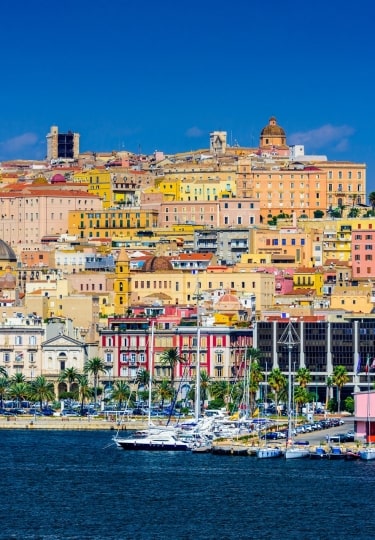If you like white sand beaches slipping away into translucent water, rugged mountains cloaked in gnarled oak forest, and mysterious Bronze Age ruins to explore, then you’ll want to visit Sardinia.
The second-largest island in the Mediterranean appears outwardly Italian, with Italian spoken and the chrome detailing of innumerable Vespas glinting in the sun. Sardinia is, however, truly its own destination. Contributing to its depth of character is its equidistant position between Tunis and Naples, with Corsica a kissing cousin just to the north. You’ll find North African spices stocked beside the basil and oregano beneath the awnings of the island’s food markets.
Mainland Italians love to visit Sardinia for its sense of a home away from home, not to mention the glorious beaches. Famously, former Italian President Silvio Berlusconi has a palatial estate on the island’s popular west coast, and while the villas do tend to thrust their porticos towards the watery fringes, what lies inland is also well worth your time.
Sardinia’s mountainous interior is a summery haze of fragrant macchia, cork forest, and mane-tossing wild ponies. A thriving pastoral way of life persists here and it is this dual nature that makes Sardinia such a wonderful place to visit.
It’s Italian Cuisine’s Best Kept Secret
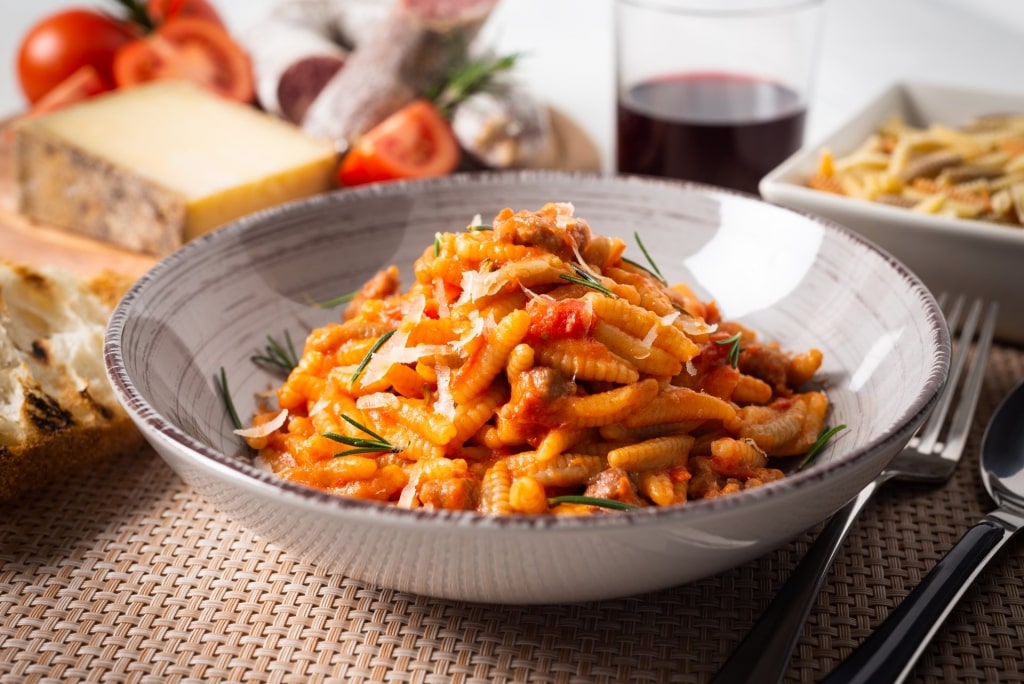
Malloreddus pasta
Similar to Sicily to the south, Sardinia has endured successive invasions by numerous civilizations. This, as well as being a crucial cog in the machinery of regional trade, has led to its cuisine becoming a melting pot of Mediterranean flavors with African accents. This happy combination is fed by the bounteous coastline and impressive sheep population.
On the plate, throughout Sardinia, you’ll find saffron threads and sea urchins, octopus, and artichokes. The population, in a typically Italian way, seems dedicated to quality food, whether in a Michelin-starred restaurant in Cagliari to an Algheresi beach shack serving Catalan lobster salad. Prepare to eat extremely well.
Island-wide specialties include malloreddus pasta (also known as Sardinian gnocchi) that sings when paired with richer, heavier sauces such as sausage and fennel ragu. Grate some sharp, homegrown pecorino sardo over the top, probably the island’s most famous cheese. The earthy pearls of semolina fregula, often found bobbing in saffron-spiced seafood soups, are an example of African influence on the local pasta.
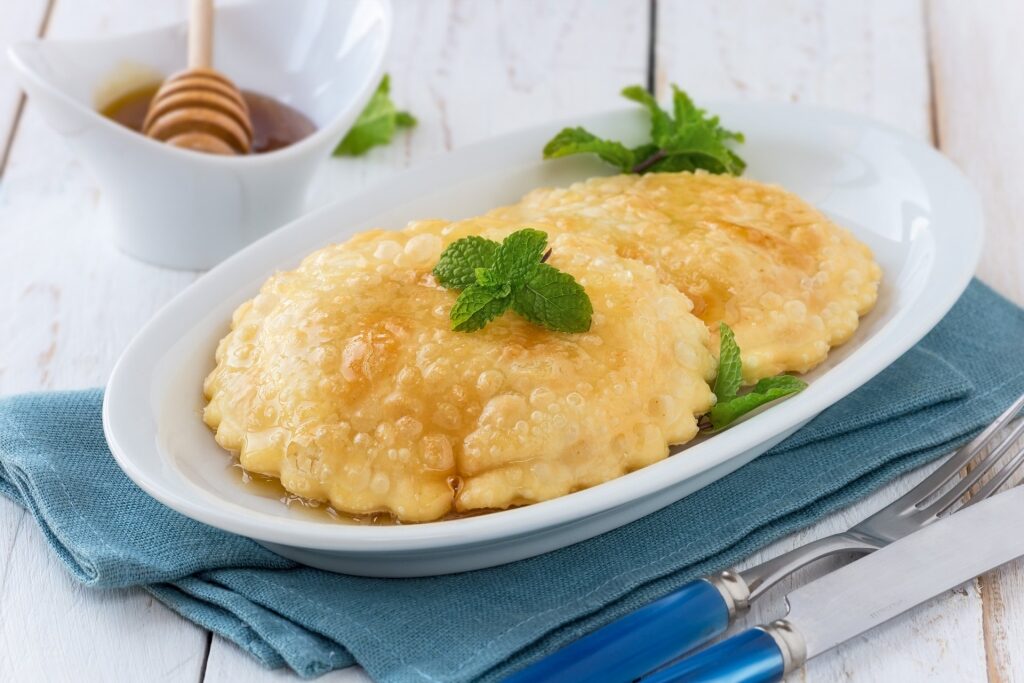
Seadas
Also, look out for full-flavored bottarga; salted, cured fish roe that Sardinians grate over everything from scrambled eggs to “spaghetti con bottarga”. More approachable is seadas, a fried pastry dessert lacquered in honey and with a filling of fragrant, citrusy soft cheese.
Read: An Insider’s Look at Italian Food Culture
The Hiking Is Incredible
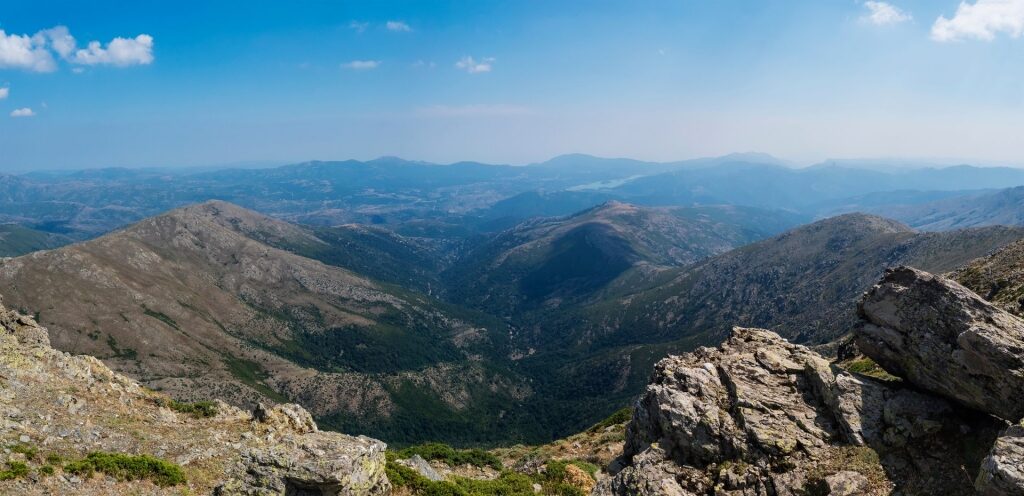
Punta La Marmora
The eastern side of Sardinia is its most rugged face, with the granite mountains of the Gennargentu range rising up to Punta La Marmora, the island’s highest point at 6,017 feet. With the exception of the southerly Campidano plain, however, wherever you are, you’re up in the hills pretty quickly in Sardinia.
You’ll wander lanes fringed with fragrant brush and happen upon tiny villages where sheepherding has been the way of life for centuries. Take another turn and you’ll find reminders of a way of life stretching back millennia in the form of prehistoric tomb mounds and defensive Bronze or Iron Age towers. They’re abandoned now, although local legends haunt their sandy spaces.
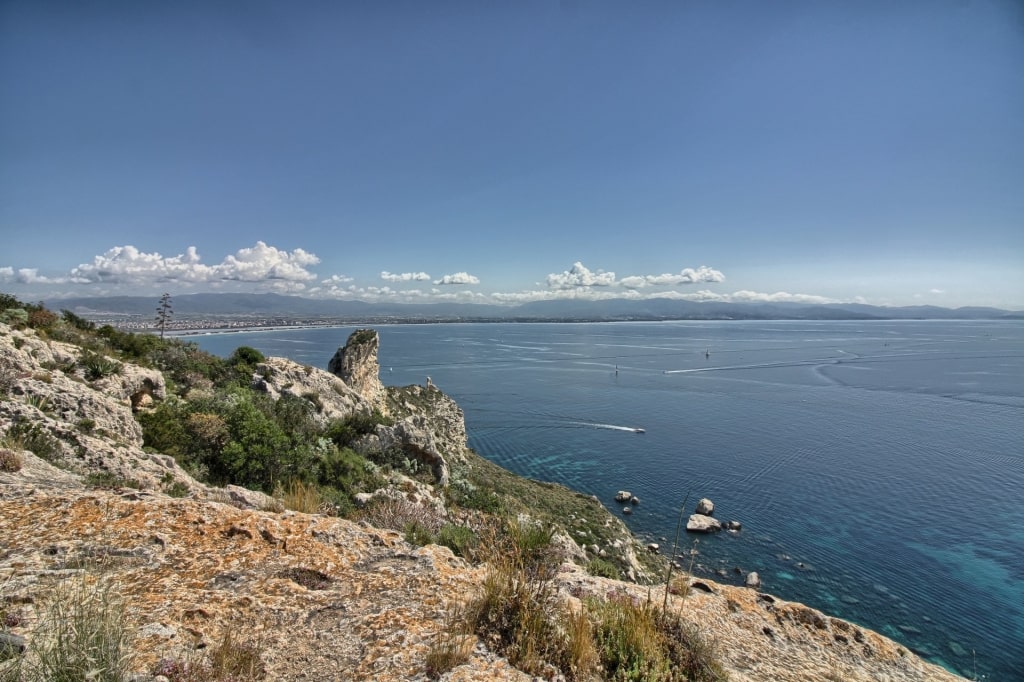
Sella del Diavola, near Cagliari
Not all walks with wonderful views are to be found far from the urban centers. Sella del Diavola, near Cagliari, is a classic short hike that takes you up to a lookout taking in Poetto Beach and the Gulf of Cagliari beyond.
The Wine Is Fabulous
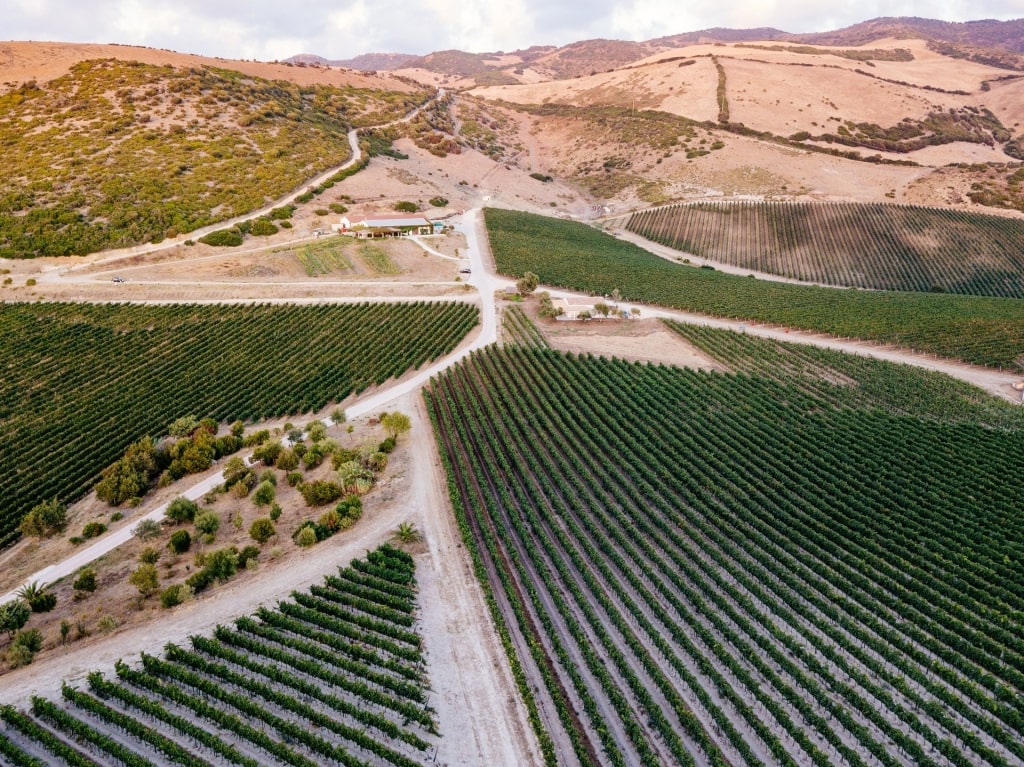
Vermentino
As with the Sardinian food, so with the wine. Native varieties of grapes exist on Sardinia, but a plethora was introduced by traders and invaders to these shores. Add sunshine and sea breezes, and you have an island-sized workshop of interesting wines.
Perhaps the wine that you’ll most want to swap your hiking boots for in your luggage will be Vermentino. The only DOCG (indicating the highest quality in national rankings) grape variety on the island, Vermentino is a white often likened to Sauvignon Blanc. Its lemon, almond, pear, and hint of saline mix is a perfect partner to the island’s seafood dishes, and, due to its relative obscurity, an exquisite bottle makes a good souvenir.
Also, look out for Nuragus, a highly approachable white that was imported to Sardinian shores by the Phoenicians nearly 3,000 years ago. Mostly grown on the Campidano Plain, this is a zesty mouthful of citrus and green apple flavors. Another suspected Phoenician import is Vernaccia, umami, sherry-like fortified wine that the locals rarely allow to escape the island.
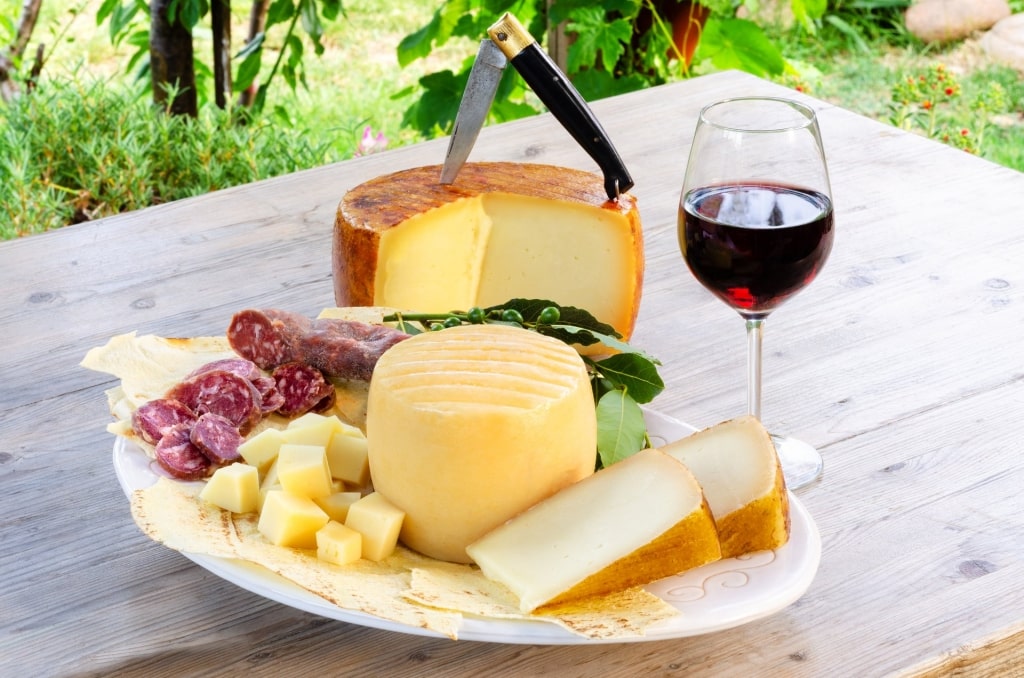
Cannonau
For the red loyalists, you’ll mostly be drinking rich and spicy Cannonau, a Spanish import and the local name for Grenache. It’s omnipresent on wine lists (Cannanau represents a third of production on the island) and the best comes from around Ogliastra, Nuoro, and the Spanish-influenced city of Alghero.
If you’re concerned about missing out on rare Sardinian tipples, best book a wine tasting in the frescoed interior of Ristorante Cavallino della Giara, conveniently close to the famous Su Nuraxi site.
Read: A Guide to Italian Wine & Food Pairings
Cagliari, the Capital, Is Truly Atmospheric
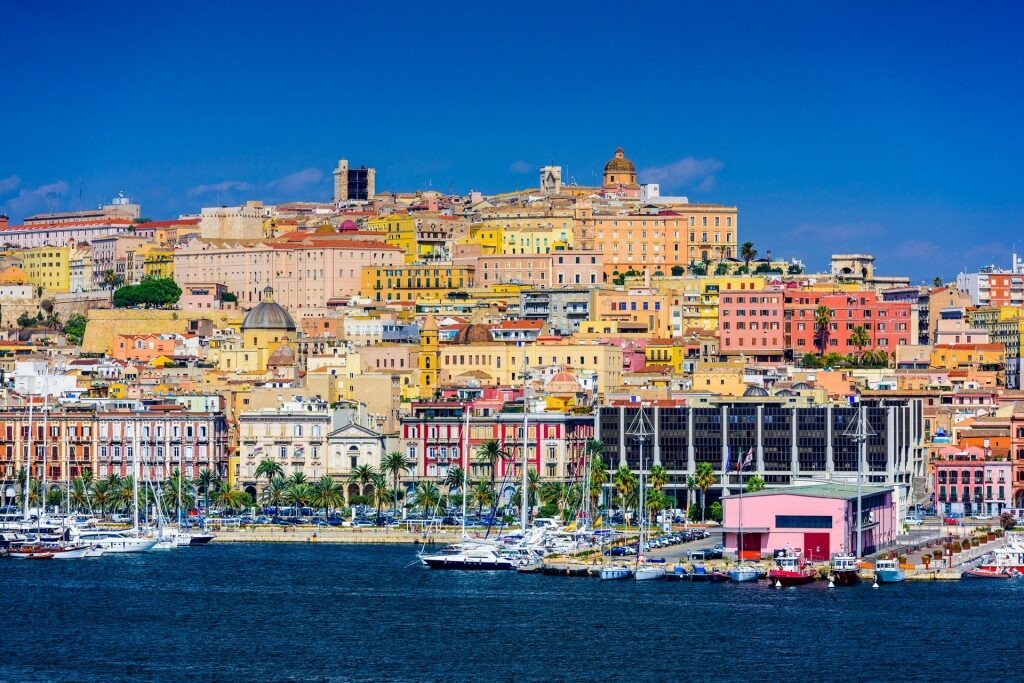
Cagliari
The capital of this former island kingdom, Cagliari is a concentrated dose of the Carthaginian, Roman, Byzantine, Spanish, and Italian collage that is Sardinia. Little surprise then that this remarkable city in southern Italy is a former EU Capital of Culture, with its Il Castello quarter the cultural cradle of the city and one of the best places to visit in Sardinia.
Perched on a rocky bluff, the northern entrance of Il Castello is guarded by one of the city’s historic landmarks, the San Pancrazio Tower. This fortification’s stout, castellated form was erected in 1305 as a defensive fortification to repel an Aragonese invasion. No battering ram is required today to breach its 12-foot thick limestone walls and ascend for incredible views of the city’s snaking streets and elegant domes.
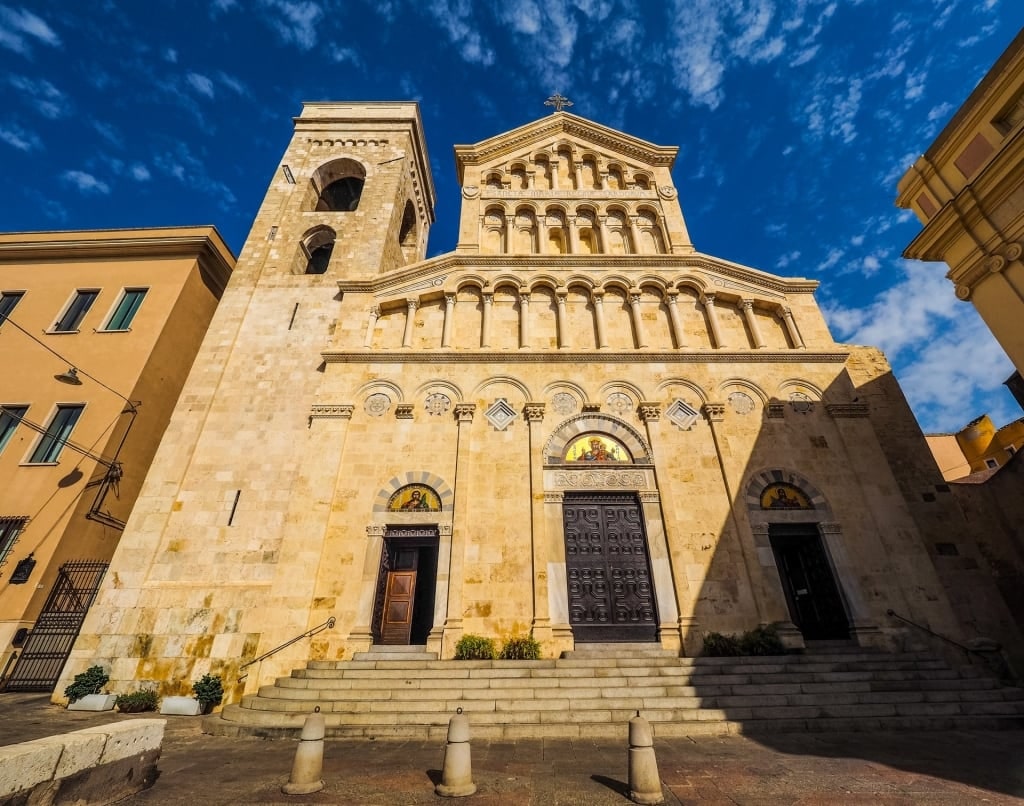
Cattedrale di Santa Maria, Cagliari
More wonderful views, this time of the coast and the pastel-painted artisan quarter of Villanova can be gazed upon at Piazzetta Mundula. At Piazza Palazzo, pause for a look around the 13th-century Cattedrale di Santa Maria, before making your way to the Piazza dell’Arsenale and the stunning Bronze age statues found within the Museo Archeologico.
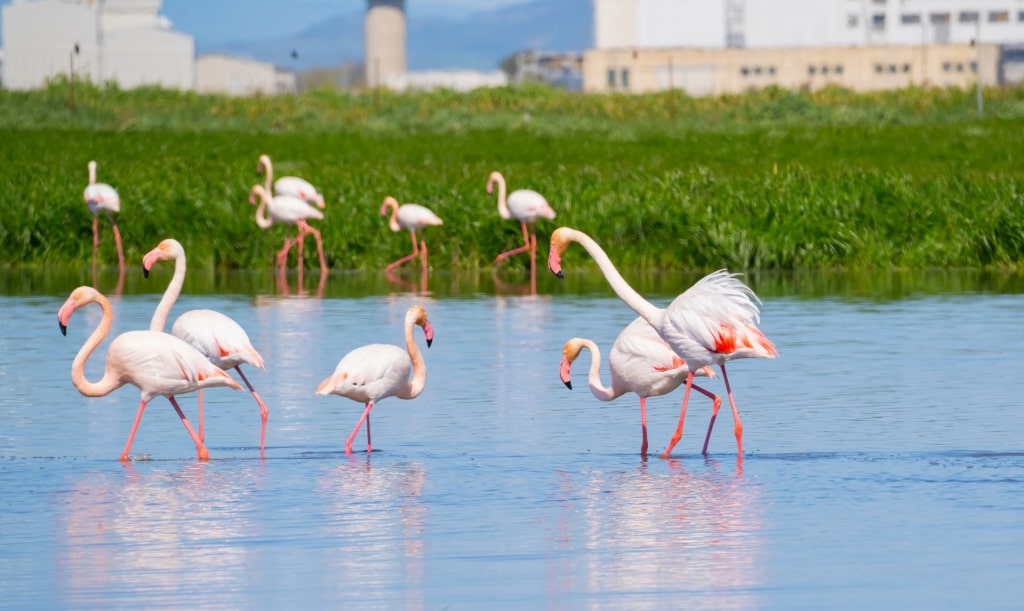
Molentargius Marshland, Cagliari
After your time exploring, make your way to the glassy waves of Poetto Beach, five white-sand miles of immaculate city beach. Or wander the creaking wooden walkways of the Molentargius Marshland spotting the bathing flamingos.
Sardinia Has the Best Beaches in Italy
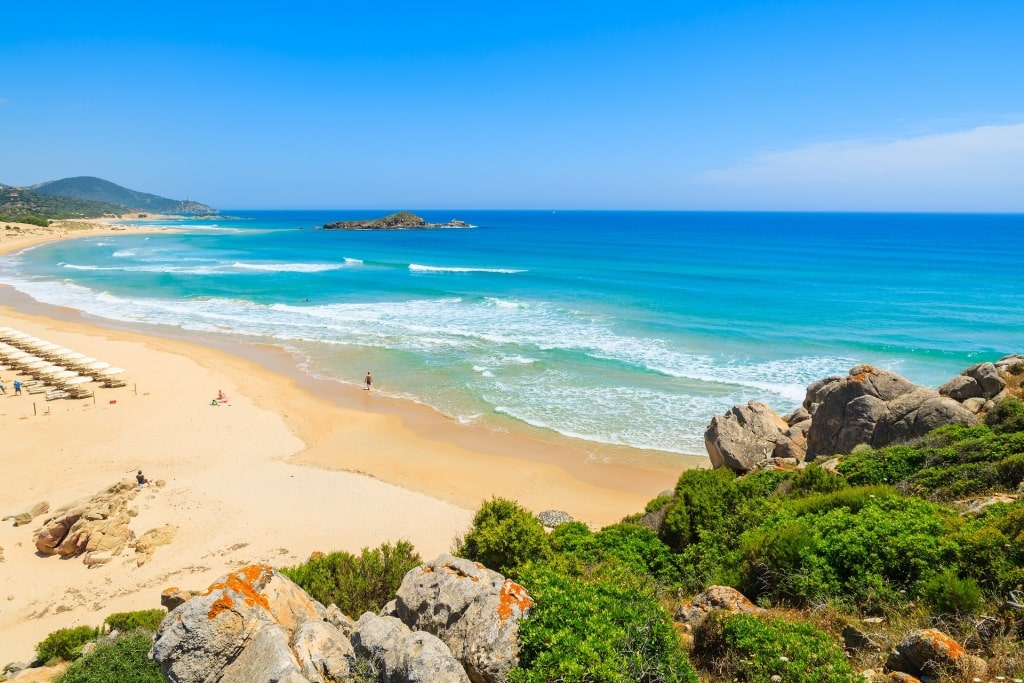
Chia Beach
Sardinia’s coast is glazed with silvery swathes of beach perfection. In fact, so abundant are the splendid Italian beaches that it’s probably the chief reason people visit Sardinia (although the Vermentino runs a close second).
On the southernmost extent of Sardinia, you’ll find Chia Beach. It’s a first-amongst-equals of icing sugar-sand and turquoise shallows, surrounded by scented juniper scrub and enclosed by jutting headlands. On its northern half, known as Sa Colonia, you’ll also find a crumbling Spanish tower on the promontory as well as ruins nearby that belonged to an 8th-century Phoenician city.
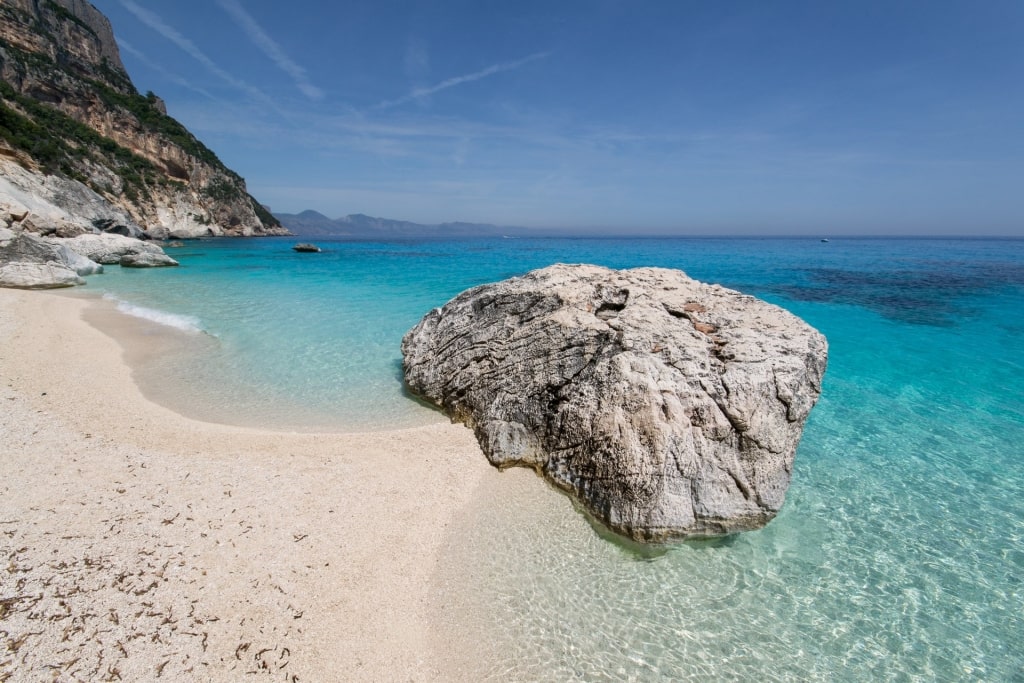
Cala Goloritzé
Then there are beaches like Cala Goloritzé on the east coast, the wild ones that can only be approached by sea or a snaking cliff path.
Marked by a pinnacle of pale karst on the Gulf of Orosei, this Sardinian beach, with its white pebbles, stone arch, and magnificent castaway feel is so highly regarded by the Italians that they named it a National Monument. Hire a pedalo or navigate the stony path past the blushing bark of strawberry trees to reach this beach.
Nature Is Nearby
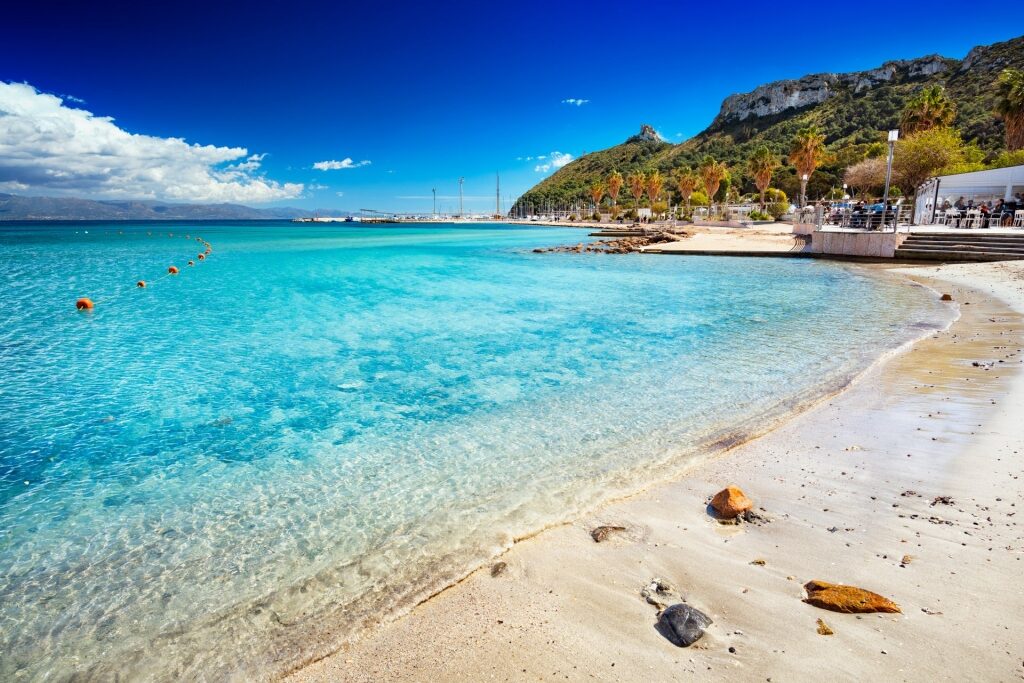
Poetto Beach, Cagliari
On Sardinia, it’s a quirk of the island that nature and its urban centers seem to coexist in unusually close proximity. Perhaps the most high-profile example is the city’s much-beloved flamingos, preening in the salt pans on the other side of Poetto Beach’s promenade.
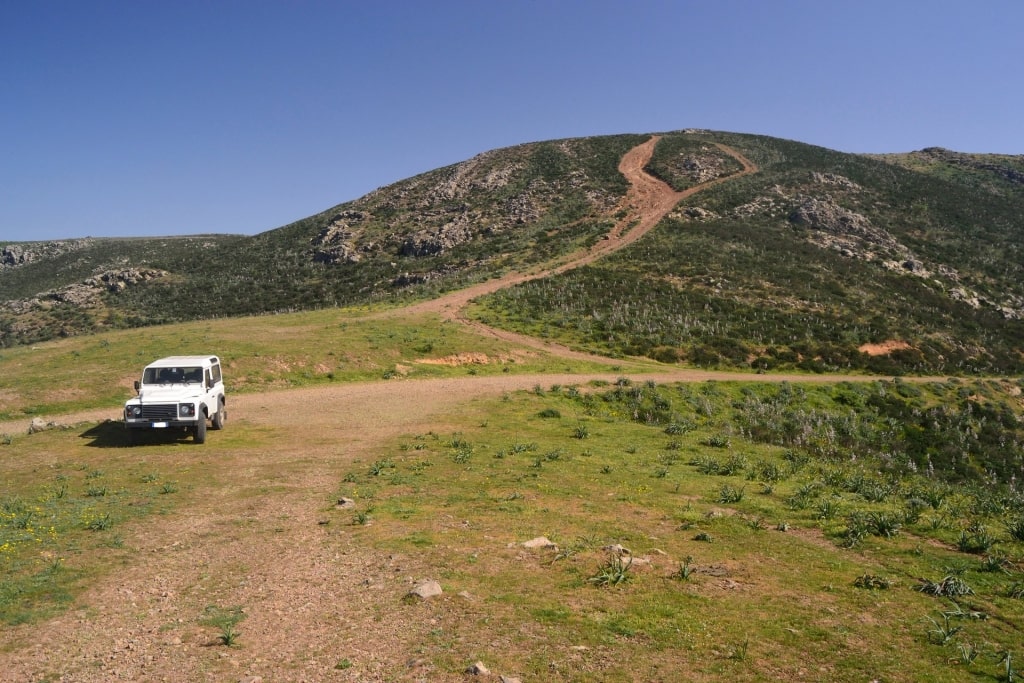
4×4 Tour
The flamingos often nest in the Santa Gilla lagoon as well, an expansive 15,000-hectare wilderness adjacent to Cagliari’s airport. While you can travel around by bike with your binoculars to spot the flamingos, egrets, and turtles found in this wildlife sanctuary, another way to get around is on an immersive 4×4 tour.
But if you’re keen to spot some of the rare Sardinian deer that call the lagoon their home, you’ll need to disembark from the jeep and walk the trails. Stop for a picnic in a woodland clearing while scanning for a glimpse of the island’s emblematic red deer.
The Ruins Are Astonishing
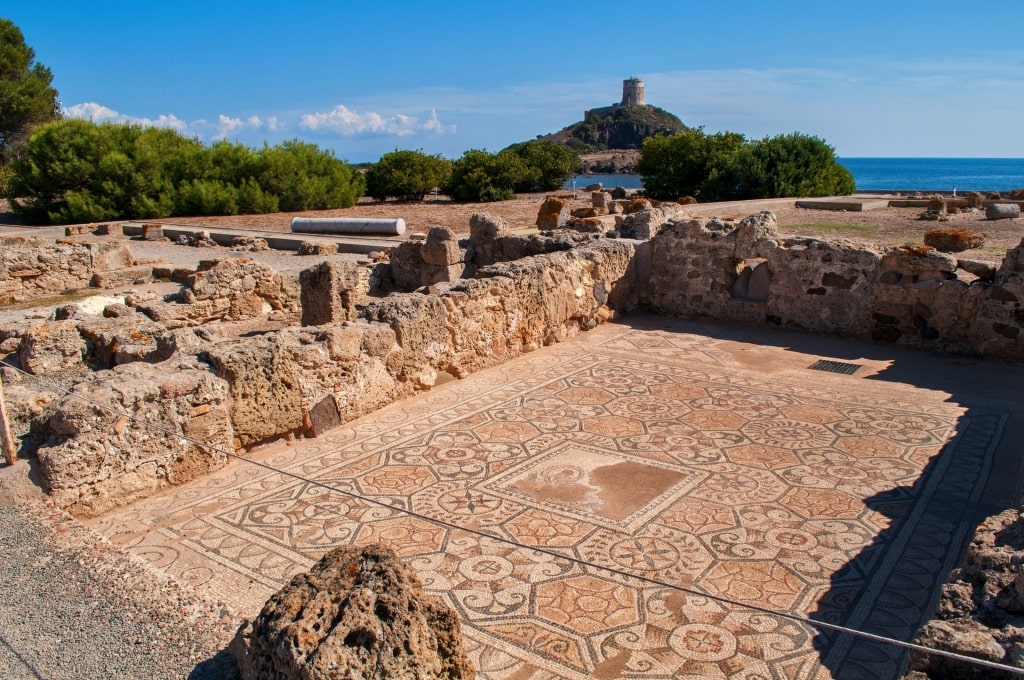
Nora
With over two millennia of history dotting its fertile landscape with intriguing ruins, Sardinia is something of a large, open-air museum.
You’ll encounter evidence of ancient civilizations all over the island, but there are a couple of sites you should write firmly into your itinerary. One that Sardinia is known for is the ancient city of Nora, found a good half an hour’s drive south of Cagliari. As in Ortigia in Sicily, where the evidence of successive civilizations building upon each other is in the visible architecture, so Nora is a weathered tapestry of Nuragic, Phoenician, Carthaginian, and Roman influences.
Often styled as Sardinia’s first city, all roads in Sardinia used to begin at Nora and its famous thermal baths. The city thrived as a port thanks to its sheltered positioning on the Capo Pula isthmus. As you marvel at the beautiful floor mosaics in the archaeological park and explore the exhibits within the museum, you’ll begin to get a sense of the way of life for Nora’s former 8,000 inhabitants.
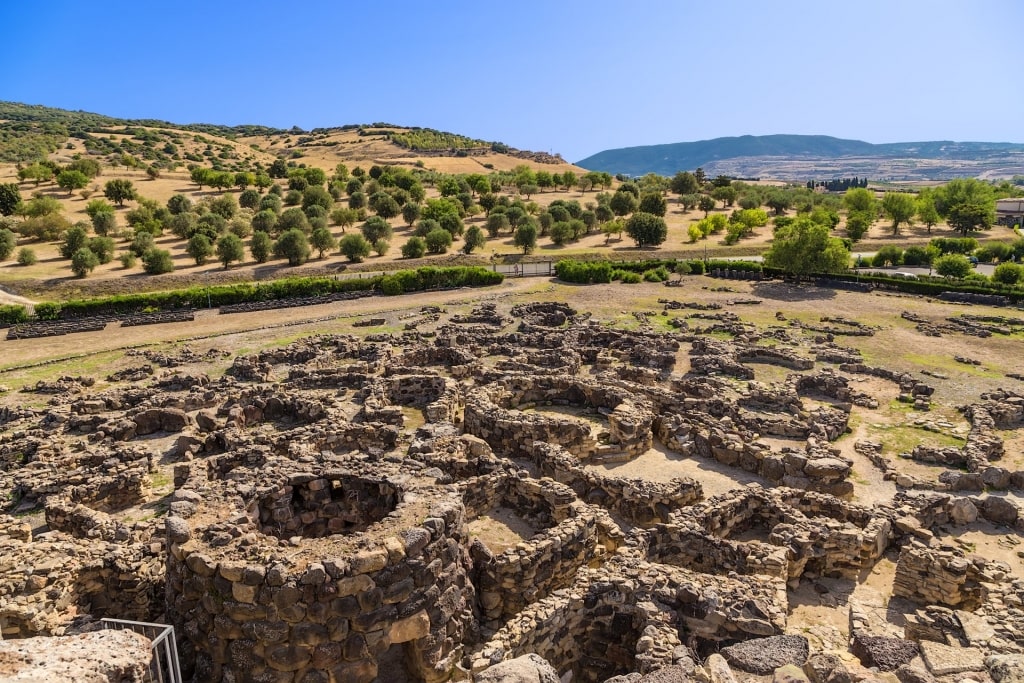
Su Nuraxi di Barumini
Taking you even further back in time is Sardinia’s only UNESCO World Heritage Site, Su Nuraxi di Barumini. Su Nuraxi is the most extensive and well-preserved of the Nuraghi Bronze Age structures that you’ll see when you visit Sardinia. Unique to the island, these cone-like, basalt-block structures were early defensive fortresses that were extended throughout the centuries. A 45-minute drive from Cagliari, the best way to uncover its secrets is with a guided tour.
You’ll Discover Hidden Towns and Villages
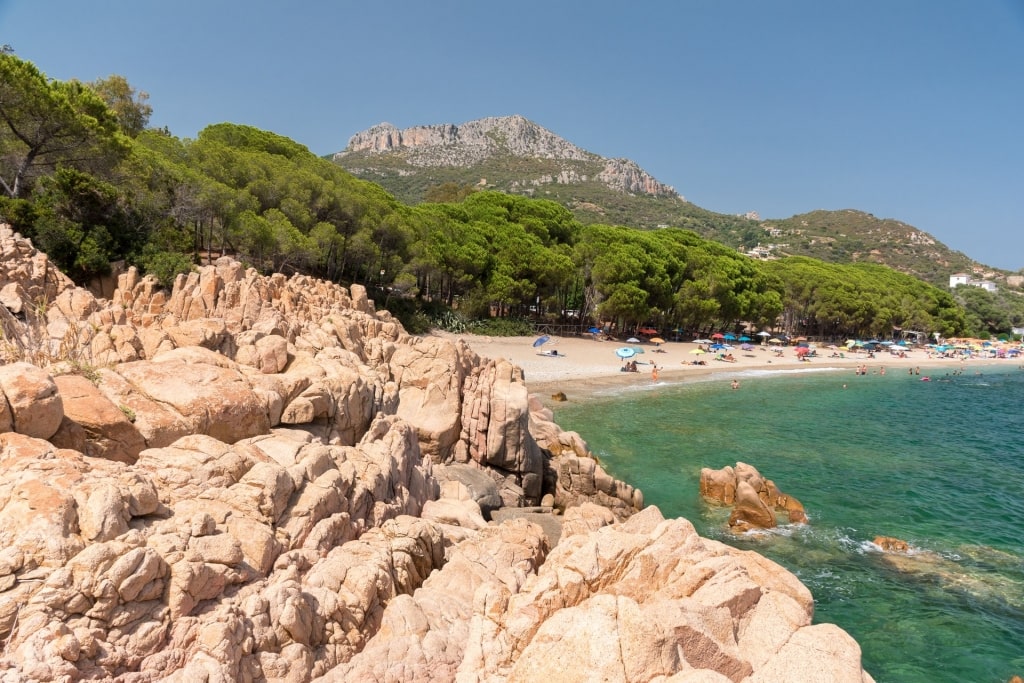
Santa Maria Navarra
While much of Sardinia’s nearly 1,000 miles of sublime coastline is well regarded for its glorious Mediterranean beaches, among these are seaside villages and towns with lower profiles that are some of the best places to visit in Sardinia.
Midway on the east coast of the island, backed by dramatic limestone mountains and with a pine-shaded promenade that hugs a romantic coastal path, is one of Sardinia’s prettiest small towns, with a white sand beach as a bonus. It’s worth the trip here to get away from it all.
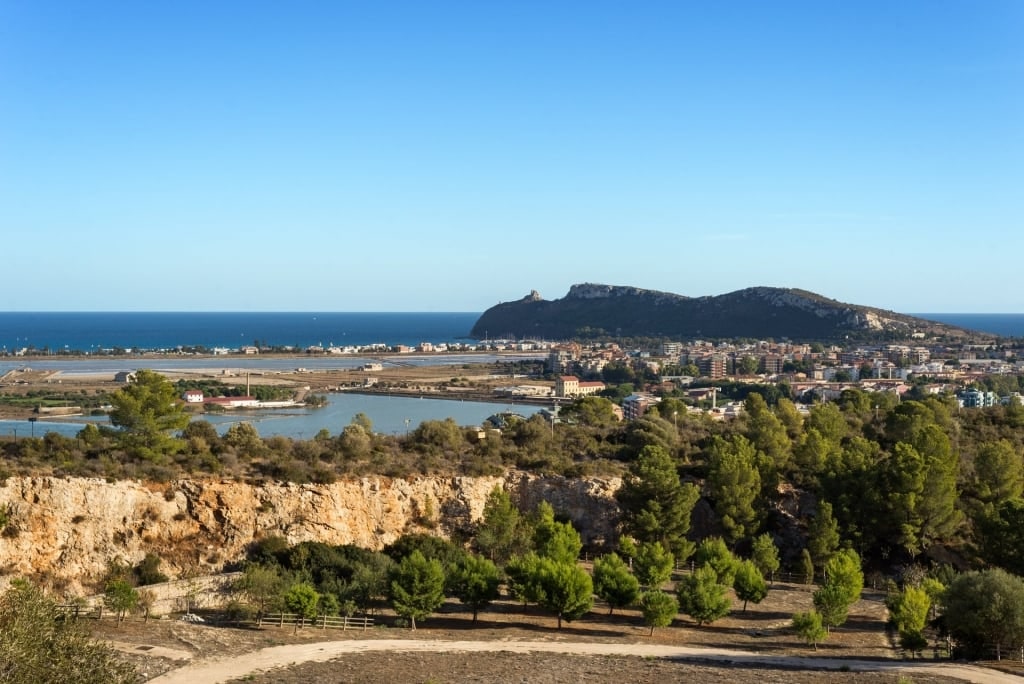
Giorgino, Cagliari
Even if you’re based in Cagliari, remarkably there’s a hidden away fishing village found here. The village of Giorgino, less than a mile from the city center, feels completely removed from the development of the city.
Surrounded by wetlands, Giorgino is a unique piece of Cagliari’s urban tapestry. Despite its isolation, it returns to the Cagliari consciousness twice a year with the Fisherman’s Feast and costumed Saint Efisio religious procession to its local church.
However, what Giorgino is best known for is having yet another wonderful stretch of sand to bask upon. It’s also a popular kite-surfing spot. Check out Lo Zenit, Girogino’s beachside restaurant, for a plate of Longofante blue lobster washed down with a glassful of crisp Vermentino. Saluti.
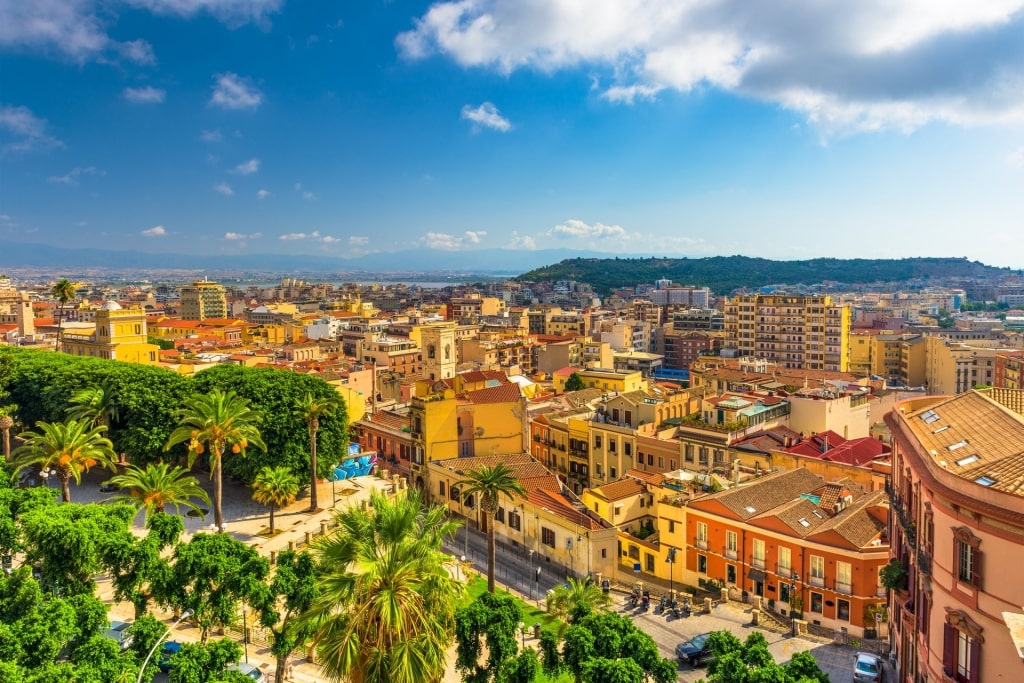
Cagliari
Visit Sardinia and explore its historic, cultural, and culinary heritage on a cruise to Italy. Browse our cruise itineraries online and book a cruise vacation to this stunning country today.
